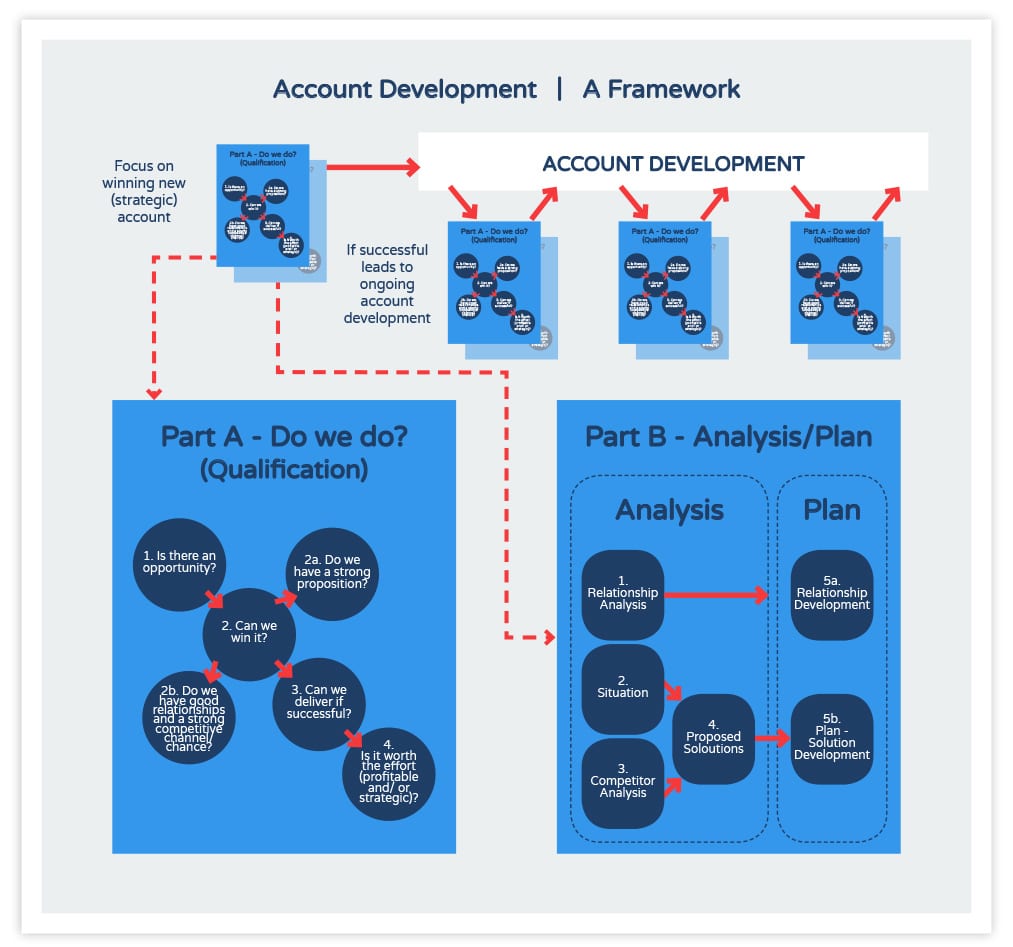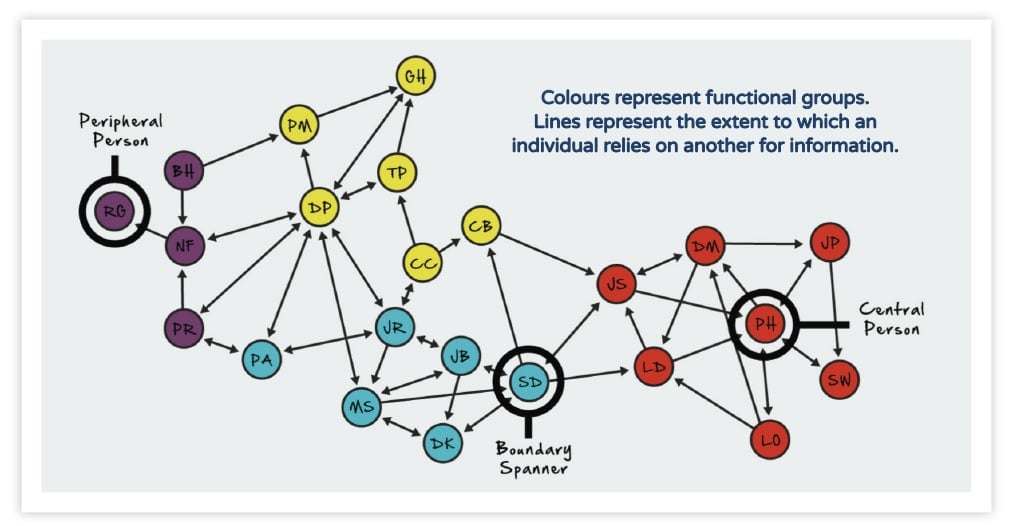How to best enable those must win efforts - Who makes the decision? - Who influences the decision? - Understand the social-network - Build a decision-maker matrix - A plan with two parts - This is not a paperwork exercise!
What is meant by account management in the context of professional service selling?
Well, let’s assume you have had success in building out a more systemic sales capability as I have described in my recent series of blog posts. Let’s say, also, that you have had some early success in stepping through the described sequence of sales activities and have now been presented with an opportunity (that has survived your qualification step).
You are going all out to win it.
Please send me
My free account management pack

Now, dependent on the nature and complexity of the requirement, and the prioritisation you are assigning to sale success, will be the question of how much analysis and planning goes into the ensuing sales activity. For your top-priority pursuits, I propose that you invest in developing a degree of rigour and discipline within your firm’s capability toolbox. So, whilst this might not be required in every instance, what I want to describe now is a simple structure that can facilitate your discussions and enable your efforts during those must win efforts.
What I am talking about here is essentially an account management framework; essentially, a set of analytical considerations that will enable you to develop an appropriate sales approach and activity plan. You might build such a pack when looking to win a completely new strategic client (account). If successful, you might also use such a framework to best respond to further such opportunities within the account (see blog for the distinction between hunting and farming). As such, account management is essentially a series of analytical and planning steps: as the diagram below shows.

Figure: Account Development | A Framework
Account Management
I have already covered Part A of this process (Qualification – see blog), so let’s turn now to the components of Part B (Analysis/Plan) of this account management framework:
1. Relationship Analysis
Fundamentally, professional service selling is about understanding the network of relationships within the organisation you are selling into: who makes the decision and who influences the decision? What are your relationships like with these people? Which ones will fight your corner? Which ones know little about you and warrant some time investment?
Oft is the case, that professional service firms (especially so ones that have deep technical expertise) completely miss this side of the selling challenge.
As well as examining the conventional organisational chart, you might also want to build – as your knowledge allows – a (far more illuminating) picture of influence as per the illustration below.

Figure: Illustrative social-network diagram
Similarly, it is worth plotting key decision makers on the following matrix to ascertain the focus of your relationship development plan.

Figure: Decision Maker Matrix
2. Situation
A situational analysis will seek to cover such aspects as:
- Organisation overview – sector, size, key drivers etc.
- Estimate of their budgets.
- Their historical use of professional service providers, approximate annual spend in this area etc.
- Their key strategic issues – as pertinent to your offering.
- Any other issues specific to this opportunity.
3. Competitor Analysis
For your key competitors (say top three), you will want to examine:
- Are they a current provider to the prospective client in question?
- What solution do you believe they will propose?
- What key relationships do they hold?
- Strengths.
- Weaknesses.
- Pricing.
4. Proposed Solution
From these preceding two parts, you can start to draw together a proposed winning solution. Clearly, this is ultimately to be discussed and refined with the client but this initial thinking is about putting your best first ideas forward. In relation to this activity, you should consider:
- Your most relevant service propositions and tools.
- Which of your team have the most relevant experience.
- Your case studies.
- Your networks.
- Potential courses of action (say top three).
- Your selected approach.
- Your USP specific to this opportunity.
- Client benefits arising from your proposed solution.
- Indicative team size and contract value.
- Obstacles to overcome (e.g. procurement, budgetary etc).
5a. Relationship Development Plan
The first of the two key plans builds on the relationship analysis. Using the following column headings, it should lay out a set of objectives that get you closer to having the requisite influence/relationships with the key decision makers:
- Key Contact Name.
- Contact Owner (within your firm).
- Objective (e.g. to invite to our next breakfast seminar event).
- By When.
5b. Solution Development Plan
The second of the two plans concerns building the solution. This may, for example, include partnering with others, developing a prototype or just simply writing the proposal. Such a plan will typically be captured against the following headings:
- Action.
- Responsible Owner.
- Intended Outcome.
- By When.
It should be said in closing that having such an account management proforma to work through as a team is not a paperwork exercise. Whilst it is good practice to record your thoughts, the value is not in the completed documentation but in the structured thinking and discussion that precedes this. That, of course, and the clear plans that everyone can then prosecute in pursuit of the sale.
Please send me
My free account management pack

So there you have it. If you don’t have a common approach for strategic account management, I commend you to develop a simple template along these lines to share amongst your team.
So, what’s next?
Next week, I will continue my focus on selling and how to build a sales capability with a look at your go-to-market structures; that is the topic of sector development.
Hopefully, you’ll join us on this journey. It’s totally free, and you don’t have to be a Method Grid customer (though you’re more than welcome to sign up for a free trial here).
We’ll be releasing a new post each week. To get each post emailed to you as soon as it’s published, sign up for the Climbing Mount Audacity mailing list below.
The first post in this current thread (all focused on how leading firms develop a systematic selling capability) can be found here.
Climbing Mount Audacity…
From Startup to Scaleup!
We're sharing everything we know about how to build an awesome professional service firm (and enjoy the journey en route!) PLUS travel updates, reflections on our stumbles and general musings on our Method Grid journey.
Signup below to get the latest articles
direct to your inbox.
See you next week. Have something you want to hear more about? Let me know in the comments below or via Twitter.

 Project and Program Management
Project and Program Management  Project Governance Framework
Project Governance Framework  Benefits Management Framework
Benefits Management Framework 






